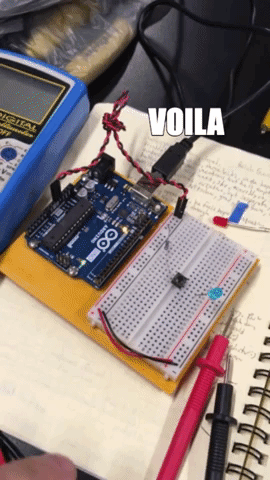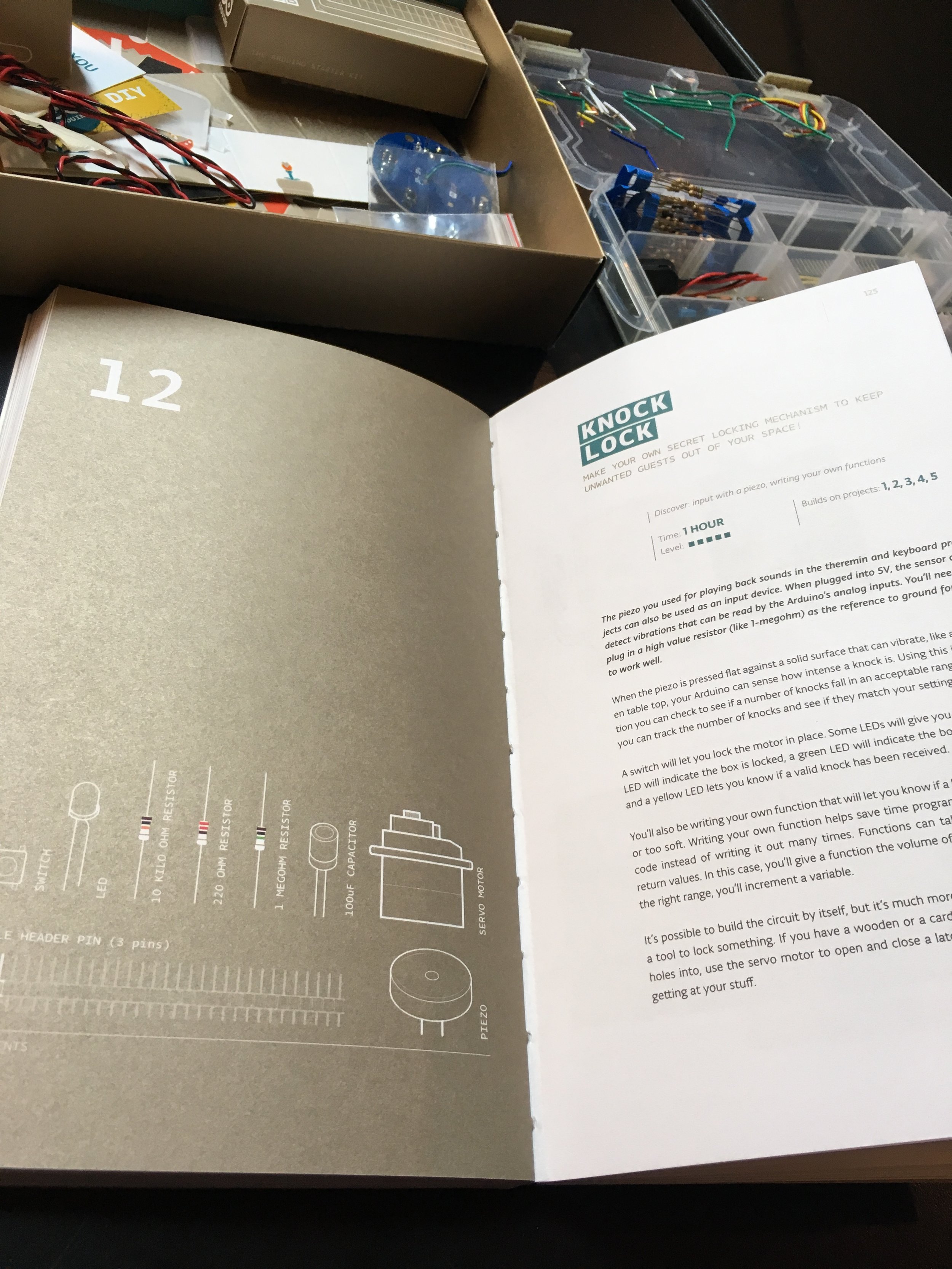At first, I used a switch from my Arduino kit in class to light an LED. Then I saw everyone else’s projects and decided to go for something more interesting...
So I thought of using the piezo pickup in my Arduino kit to turn an LED on and off, like my version of The Clapper. I knew this would take some programming so I opened my Arduino Starter Kit Book and flipped to a project that had the piezo involved. I set the whole thing up and programmed the lines, even though I quickly realized that what they were showing were predicated on the previous 12 projects - it was all over my head mostly. But I got the code to verify, after a few fixes. And then it wouldn’t load to the Arduino!!! So after 45 minutes of setup and programming, the damn thing would work. I tried pressing the reset button, loading the most basic program, but that didn’t work either. So I packed it up and went to dinner defeated :-/
When I came back, I decided to at least make something so I was going to make a version of what most folks were up to with the copper tape. It would be a switch that doubled as a bookmark. When the book was open, the switch would not connect, and this would trigger a light to come on and when the book was closed, the light would turn off. This too would take some programming I realized, so I thought to leave the programming for later and at least get the switch done.
But it turns out there were all out in the shop! As I walked back to make a cup of tea, I saw the empty peanut butter jars and the idea occurred to use the aluminum from the fresh seal on the top of the jar. I could fold it onto itself and see if I could get it to conduct.
I grabbed a few for testing and found here was a thin plastic coating on one side and a thicker paper coating that had been glued on to the other side. I did some testing and found the small aluminum layer material to be conductive indeed so I used an Exacto knife to removed the paper layer, revealing the aluminum in two spots on each side. I then removed a strip of aluminum running down the middle so that I had two pieces, but left the paper layer in tact so it would still fold. I did one test using solder to attach the wires, but I found the aluminum to be terribly difficult to solder on to. I decided to weave the wire through the layers a few times, poking some holes along the way, which worked out ok.
Then the switch was having trouble lighting once it was in the book because of the thickness of the wires holding the pages apart, so I taped some tabs onto the back of the exposed aluminum and the contact was made rather well.
The bookmark idea is still in tact, but I’ll need to do learn some programming first!













